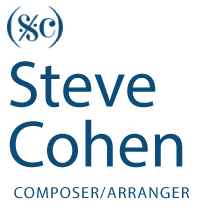21 February 2013
Early in my career, I would write fan letters to composers and arrangers whose work I admired, and ask them to look at my work, critique it, and offer advice. The overwhelming majority of those I contacted responded most graciously in the affirmative. They were incredibly generous with their time and attention, and gave me valuable insights into their methods, as well as some terrific war stories. Some of them even gave my name out to others, or called me to assist them on projects.
I seem to have reached a state in my career where younger, or less established composers are now asking me to look at their work and give them advice on how to get it heard. It is, of course, flattering to be thought of as successful, and I take the responsibility of their trust very seriously. I owe a great deal to the writers who helped me, and since I can never really repay them for their kindness, I “pay it forward” by showing these other writers the same courtesy I was once shown.
Someone recently asked me what he could do to get his music performed more often. The music he showed me was very well crafted, intelligent, interesting and musical; there was nothing “wrong” with it that would put it in the reject pile. But still it languished, gathering dust. Why?
I had to think about this one, and that’s the beauty of being put in the role of a teacher; you’re often forced to examine and analyze things you may do purely by instinct, in order to explain them to someone else. “By your pupils, you’ll be taught.” as Mrs. Anna would sing to us.
What I came up with, and what I’ll share with you now, is this: Pieces I wrote to satisfy my own desires almost never get heard. Pieces I wrote to satisfy someone else’s desires almost always get heard, and usually more than just once. So, instead of writing a piece and then find an opportunity for it to be heard, why not find the opportunity first, and then write the piece to go with it?
If you want your music performed, it’s essential to get the performers in on your process, as early as possible.
Approach performers you admire, find out their interests and preferences, find out if they feel there are any holes in their repertoire that need filling, and then write the piece that will address all of the above. Check with them about ranges, techniques, as if you’re a tailor custom-fitting them for a suit of clothes. Make them part of the process, and of course they’ll perform your piece when it’s finished, because they collaborated on it with you, and, because of that, they have a vested interest in its success.
